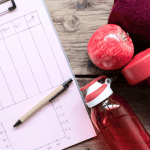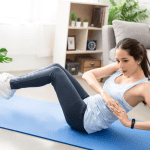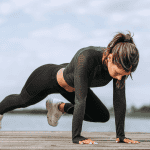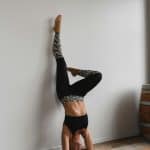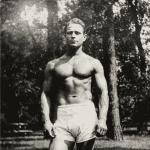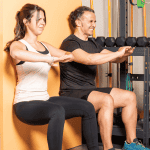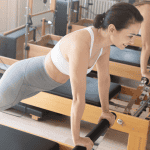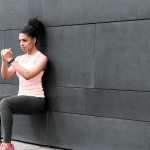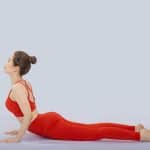Ever feel like your abs could use a little help?
Maybe your back feels tight or you notice your posture slipping by the end of the day. That’s usually a sign your core needs a little love.
This beginner-friendly Pilates workout makes it easy to start. You don’t need to join a gym or buy any special gear.
A mat and a small space at home are ENOUGH.
The moves in this routine are simple and steady. They’re designed to wake up the deep muscles in your core without making you feel overwhelmed. You’ll be able to follow along, feel each movement, and know it’s working.
Whether you’re just getting started to exercise or just want a new way to feel stronger, this is a solid place to begin.
Let’s get started.
Why Pilates Works for Your Abs

When most people think about working their abs, they imagine a bunch of crunches or fast-paced workouts.
But Pilates works in a different way.
It focuses on the deeper muscles in your core, the ones that help you sit taller, move better, and support your back.
These are the muscles that often get missed in regular workouts.
Pilates also puts less pressure on your neck and lower back, which makes it easier on your joints. The movements are slow and controlled, so you can really feel your abs doing the work without rushing.
This makes it a good option if you’re just starting out or if your body feels stiff or tired. It’s a smart way to build strength from the center out. (and yes, your core will feel it)
7 Beginner Pilates Moves That Target Your Core
Before you start doing endless crunches, it helps to know that your abs respond better to slow, controlled movements than to fast, jerky ones. Pilates is great for this. These seven moves focus on your deep core muscles, which means better strength, better posture, and less back strain.
You can do them on their own or add them to your current routine. All you need is a mat, a little space, and a few minutes.
1. Start with the Modified Hundred to Wake Things Up
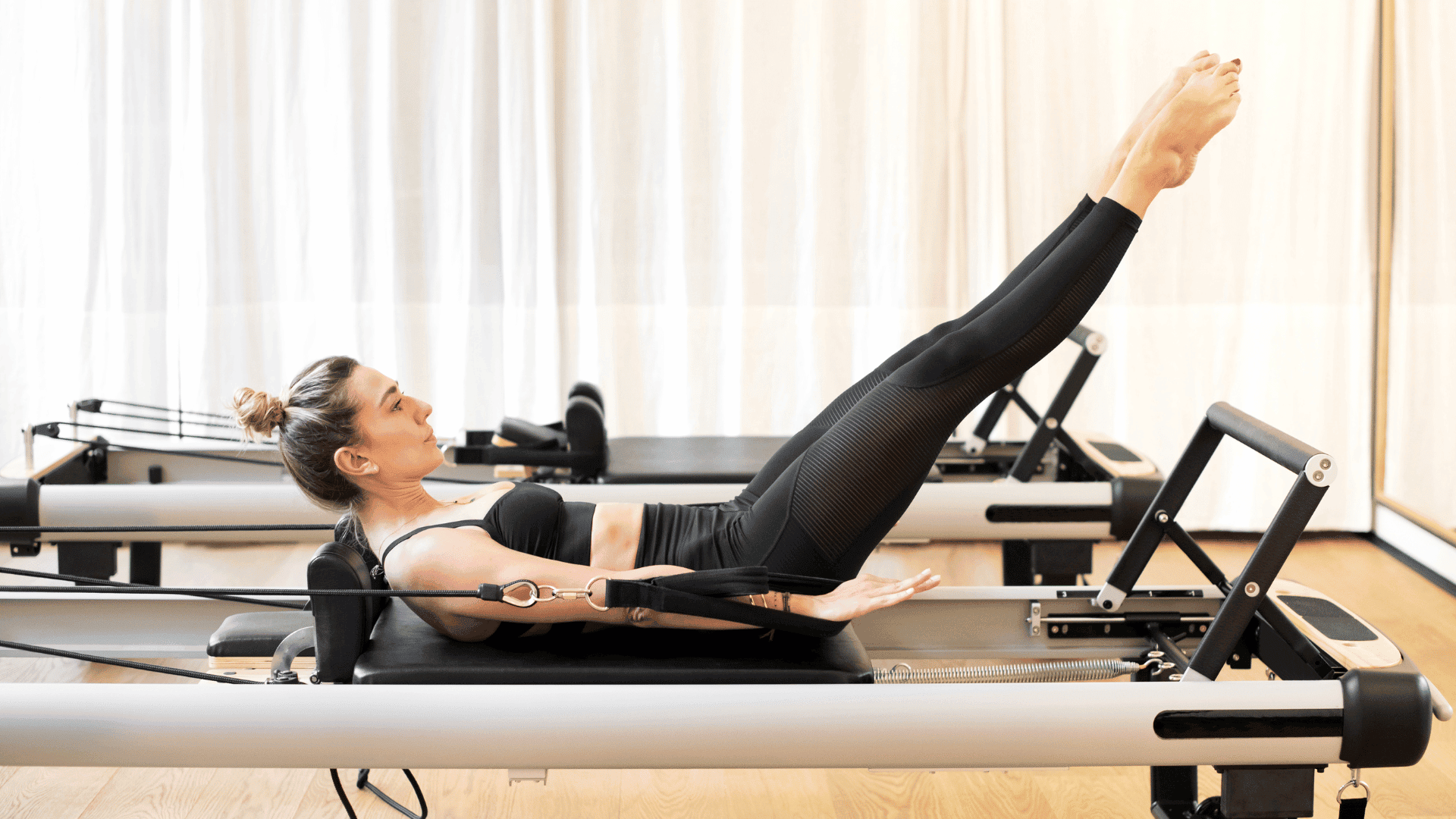
This move gets your blood flowing and your abs fired up. It’s a classic Pilates move, but easier to start with.
How to do it:
First, lie on your back with your knees bent and feet flat. Then, lift your head and shoulders slightly off the mat. Reach your arms forward by your sides, just a few inches off the ground.
From there, start pumping your arms up and down while breathing in for 5 counts and out for 5. Stop at 50 pumps.
How it should feel:
Right away, you’ll feel your abs turn on. Your shoulders and neck should stay relaxed. If your neck feels tense, just rest your head down and keep your arms moving.
2. Next, Try Single-Leg Stretch to Target Lower Abs
This move helps you stay stable while moving one leg at a time — it’s great for learning how to control your core.
How to do it:
Start by lying on your back with both knees pulled into your chest. Next, lift your head and shoulders off the mat. Now extend one leg straight while holding the other knee close.
Then slowly switch sides, one leg at a time.
How it should feel:
As you move, your lower abs will do most of the work. Just stay slow and steady; rushing through it makes it less effective.
3. Then Add Dead Bug for Full-Core Control
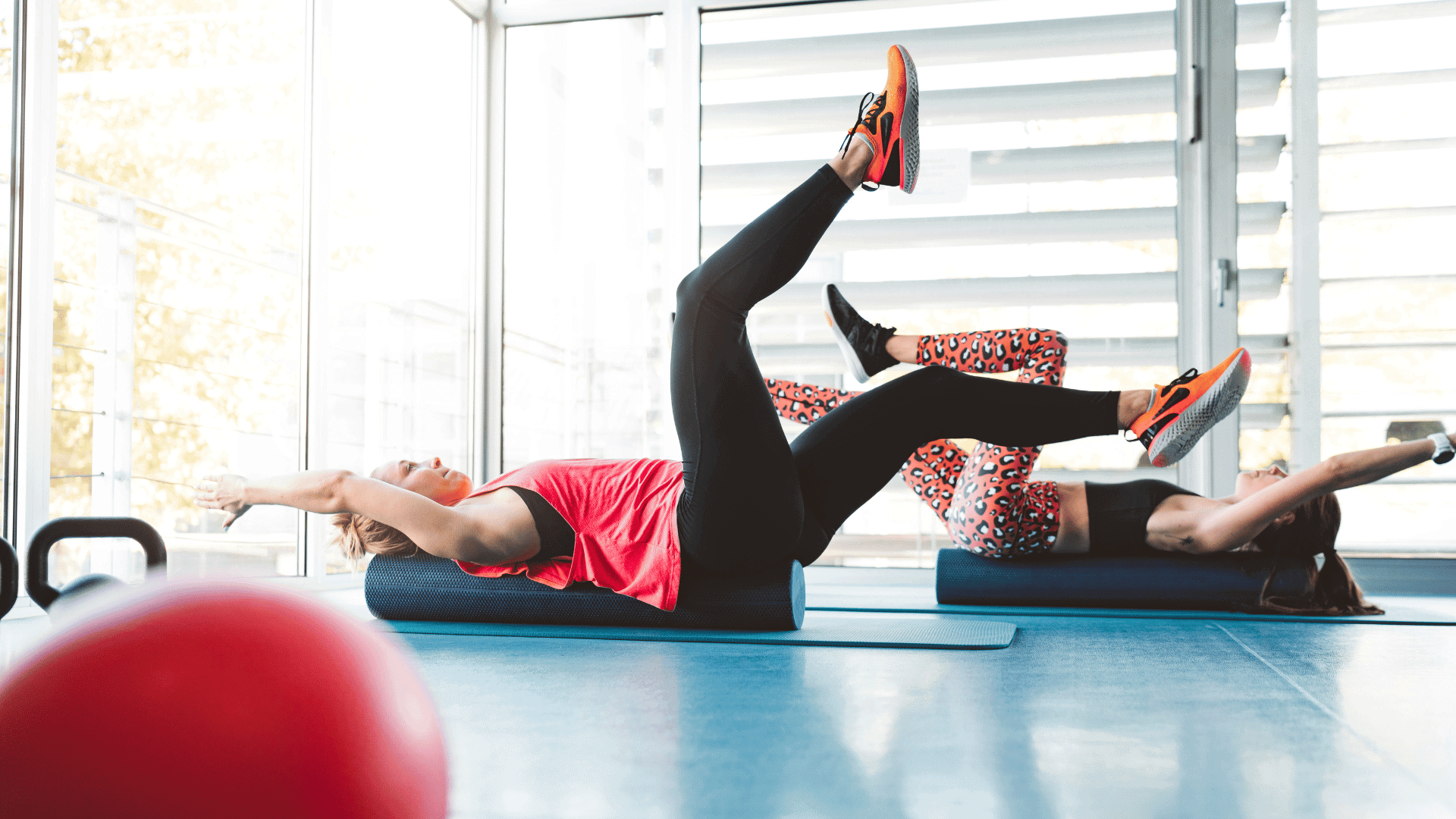
This one teaches you how to move your arms and legs without losing your core connection — super useful in real life.
How to do it:
Begin by lying on your back with arms pointing up and knees bent at 90 degrees. Now slowly lower your right arm and left leg toward the floor at the same time.
After that, return to your starting position and switch sides.
How it should feel:
You’ll feel this deep in your core, front, and sides. If your lower back lifts off the floor, just reduce your range and focus on pulling your belly in.
4. Follow Up with Leg Lifts and Reach to Feel the Burn
Now that your core is warmed up, this move takes it up a notch, but still in a controlled way.
How to do it:
First, lie flat with both legs reaching up toward the ceiling. At the same time, lift your head and shoulders while reaching your arms toward your toes.
Then slowly lower your legs a few inches, and bring them back up.
How it should feel:
You’ll feel a slow burn in your lower and upper abs. Don’t worry about how low your legs go — even a small movement works if your core stays tight.
5. Use Toe Taps to Build Deep Core Awareness
This one might look easy, but it really trains your abs to support your back during small movements.
How to do it:
Start in a tabletop position with knees bent and lifted. Keep your lower back flat on the mat. Now lower one toe to gently tap the floor, and then bring it back up.
Repeat with the other side.
How it should feel:
Each tap should make your abs work to keep your back still. It might feel easy at first, but the burn adds up fast.
6. Add a Plank Hold to Build Stability
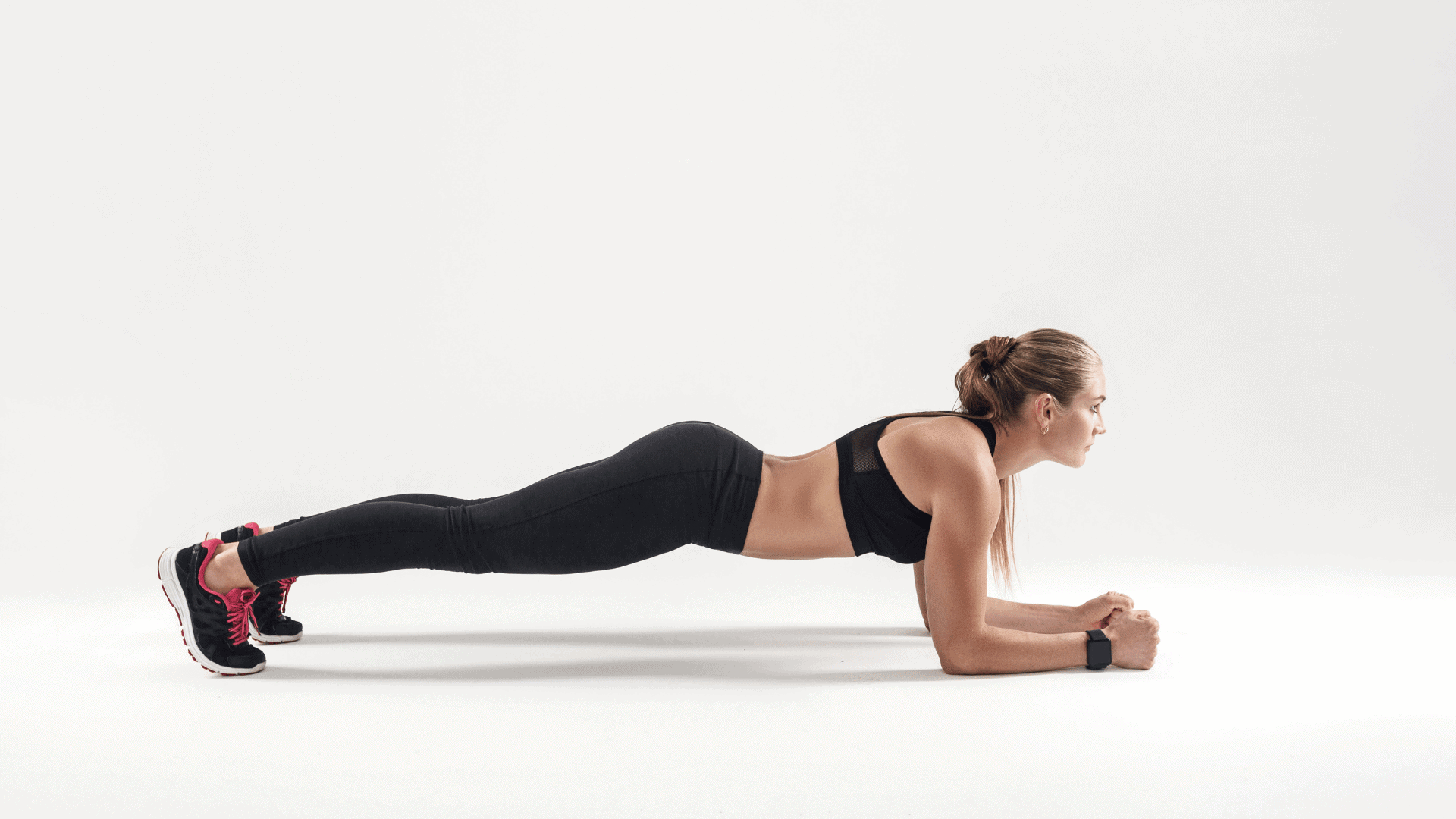
A strong core isn’t just about movement, it’s also about holding steady. This one helps with that.
How to do it:
Begin in a forearm or high plank, whichever feels better for you. Keep your body in a straight line, and hold steady for 20 to 30 seconds.
How it should feel:
You’ll feel your abs holding everything in place, along with your arms and legs. Try not to move or sag, stay as still as you can.
7. Finish with Wall Roll Down to Reset Your Core
Before you wrap it up, this move helps your spine and core relax and reset after working hard.
How to do it:
Stand with your back pressed against the wall.
Then, slowly tuck your chin and begin rolling down, one part of your spine at a time. Once you reach down toward your toes, roll back up the same way.
How it should feel:
This should feel like a full-body stretch, especially through your spine and back. It’s gentle, so use it as your reset before moving on with your day.
Quick and Easy Pilates Ab Flow (Takes Less Than 10 Minutes)
Some days, a full workout just doesn’t fit. That’s okay. You can still build core strength without committing to a long routine.
This short Pilates flow is perfect when you’re low on time, energy, or motivation. You don’t need a plan written out in a notebook or a playlist queued up (though that helps).
You just need a mat, a few moves, and a few minutes.
To start, choose 4 to 5 moves from the list above. You can go with the ones that feel good or pick the ones that challenge you most. Either way, keep it simple and listen to your body.
Want a quick sample? Try this:
- The Hundred (Modified) – 30 seconds
- Single-Leg Stretch – 10 reps per leg
- Leg Lifts with Reach – 10 slow reps
- Toe Taps – 10 reps per leg
- Wall Roll Down – 3 slow rounds
Do one full round. If you’re feeling good, repeat it once more.
But if not? One round is still a win.
Before you start, set a timer so you’re not looking at the clock every two seconds. Put on a playlist that makes you feel energized or something chill if that’s your vibe.
(And yes, this routine totally works in your PJs)
What to Expect After Just a Few Sessions
At first, the moves might feel small. But your body will start to notice the difference, even if you’ve only done a few short sessions.
One of the first things you may feel is better posture. Without trying, you might catch yourself sitting up straighter or walking with more balance. That’s a sign your core muscles are waking up and starting to support you more.
Next, everyday tasks will feel a little different. Picking something up, twisting to grab your bag, or even just sitting at your desk.
And that kind of body awareness builds fast.
After that, it’s normal to feel a bit sore in new places.
This usually means those deep core muscles are finally getting some attention, not just the ones on the surface. The burn might be subtle, but it’s doing real work.
And finally, there’s the mental shift. Even after one quick round, it feels good to finish a session. That small win sticks with you and makes it easier to roll out your mat again tomorrow.
How to Make Your Pilates Routine Easier to Stick With
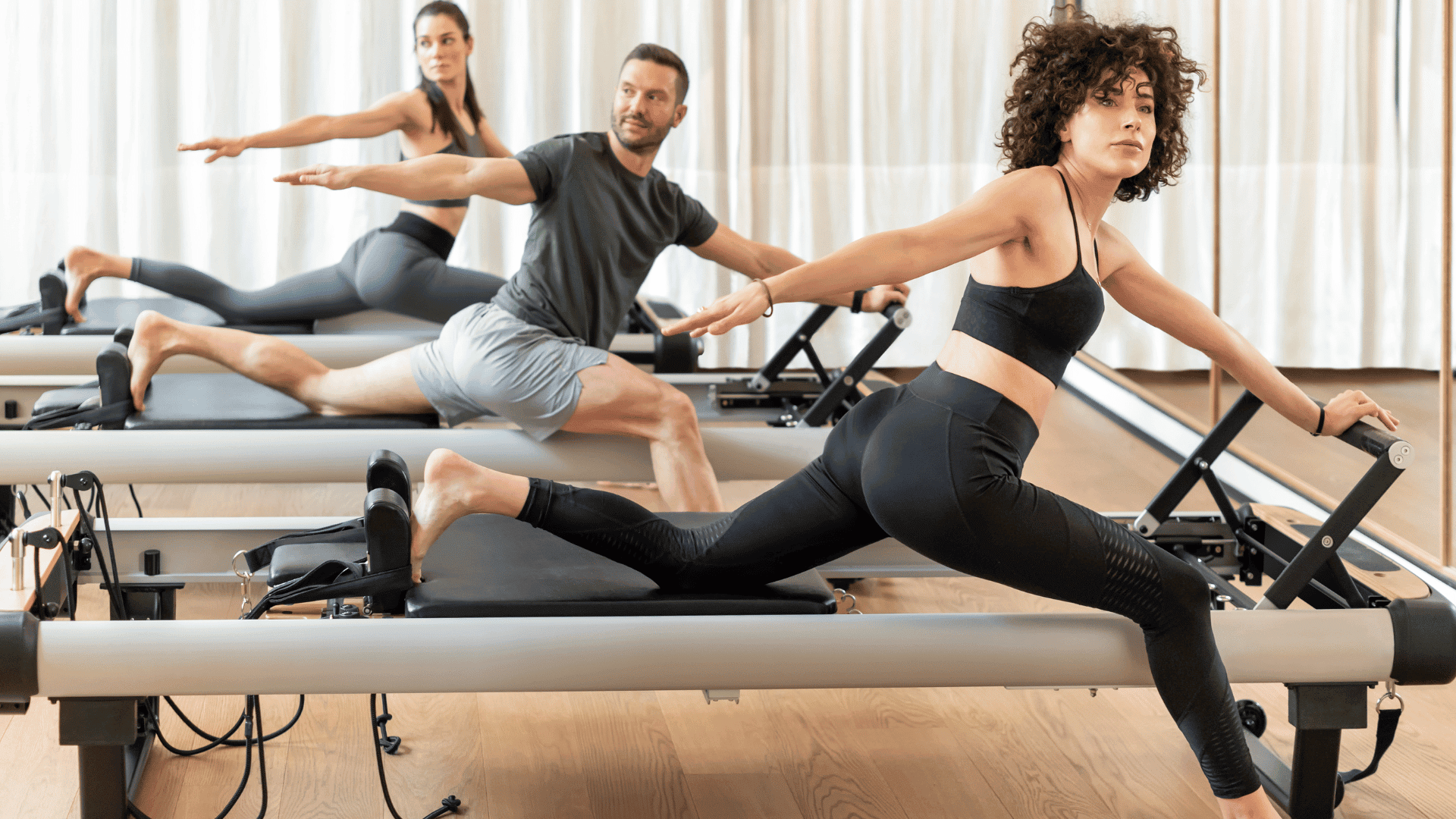
Doing a few workouts is a good start. But finding ways to keep going? That’s what really helps you get stronger over time.
These quick, doable habits can make showing up easier even on the days when you’re not feeling it.
Set a 10-minute reminder
Add a daily alarm to your phone. Treat it like any other appointment — quick, important, and non-negotiable. If 10 minutes sounds like too much, start with five. The goal is to stay in the habit.
Keep your plan visible
Print your weekly flow or write it on a sticky note and put it on your fridge or bathroom mirror. Seeing it daily makes it easier to remember your next session without second-guessing or forgetting.
Celebrate small wins
Did you hold a plank longer than last time? Did you finish a round without skipping moves? Those count. Make a mental note or mark it down.
Tiny wins build real momentum.
Find a Pilates buddy
Ask a friend, sibling, or coworker to try it with you. You can check in with each other, share playlists, or just laugh about the wobbly moments. It adds a little fun and a lot more motivation.
Consistency is what matters, not perfection. A few minutes today, another few tomorrow.
That’s how real strength builds.
The Real Progress Starts When You Keep Showing Up
Building core strength doesn’t happen overnight. At first, you might feel like nothing’s changing. But the small things you do today set the tone for everything that comes next.
You don’t need to be strong before you begin. That’s what this routine is for, giving you a starting point that is actually doable.
Even one round counts. One short hold. One move that feels easier than last time. Every time you press play or unroll your mat, you’re doing something good for your body and your energy.
You’ll feel it in your abs, for sure. But over time, you’ll also stand a little taller and move with more control.
That slow, steady strength builds confidence too, and it lasts.
Progress doesn’t have to feel big or bold to matter. A core squeeze today. A longer plank tomorrow. All of it adds up, move by move.
And before long, your core won’t just feel stronger… YOU WILL TOO.
Frequently Asked Questions (FAQ)
1. How often should I do Pilates for abs?
You can start with 2–3 times a week. That’s enough to feel progress without overwhelming your body. Once you get the hang of it, you can add more sessions if it feels good. The goal is consistency, not perfection.
2. Will this flatten my tummy?
Pilates helps build strong, deep core muscles and improves posture, which can make your stomach feel tighter and more supported. But no single workout can “spot reduce” fat. If you stay consistent and pair it with healthy habits, you’ll notice real changes in how you move and feel.
3. What if I have back pain?
Pilates is actually great for strengthening your back and improving posture. Just start slow and focus on form. If something feels sharp or weird, skip that move or try a gentler version. And if your pain is ongoing, it’s always smart to check in with your doctor or a physical therapist first.
4. Can I combine this with walking or yoga?
Yes! Pilates pairs well with walking, stretching, or yoga. In fact, they all work together to build strength, flexibility, and endurance. Just listen to your body, if it’s asking for rest, take it.
5. When will I feel or see results?
Some people feel stronger in just a few sessions, like better posture or more control during movement. Visible results take time and consistency. But if you keep showing up, you’ll notice the difference in how you carry yourself, how your clothes fit, and how confident you feel.

